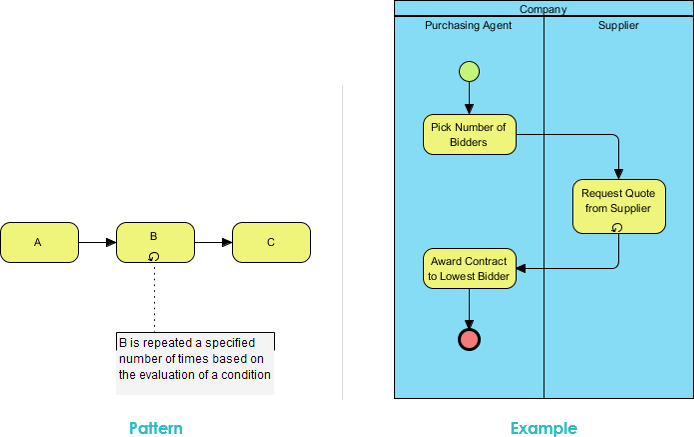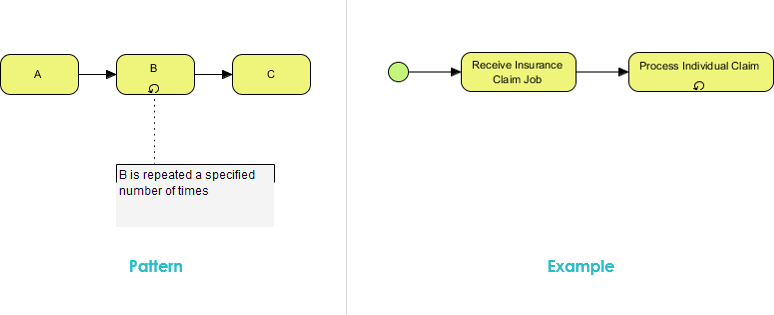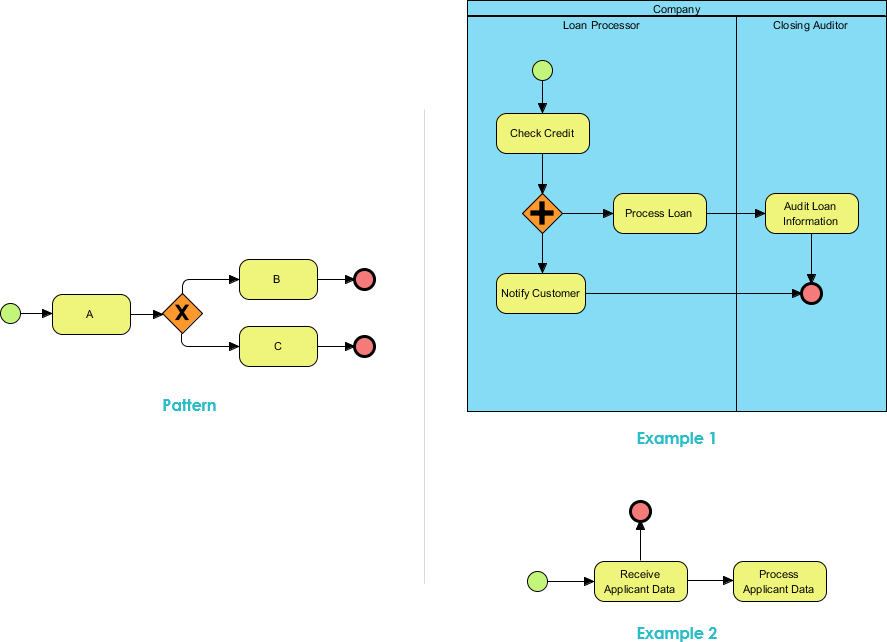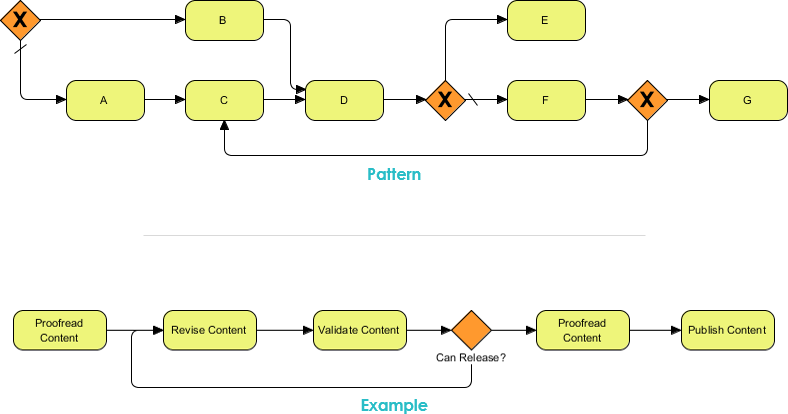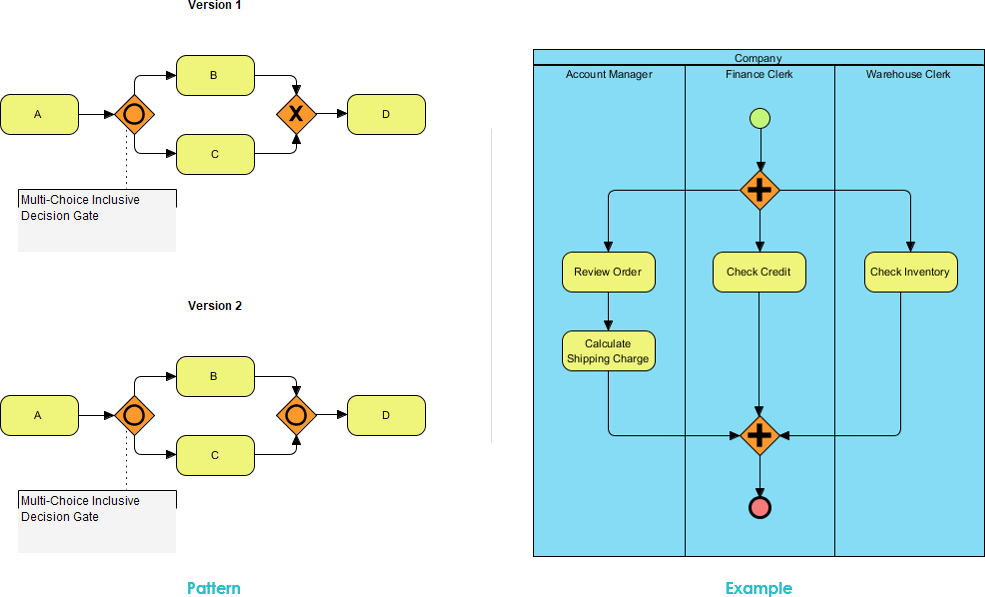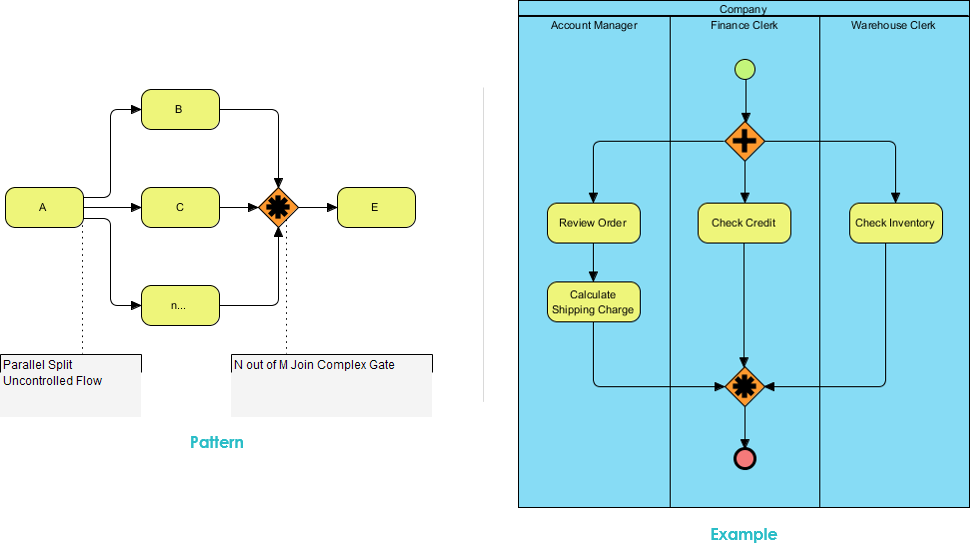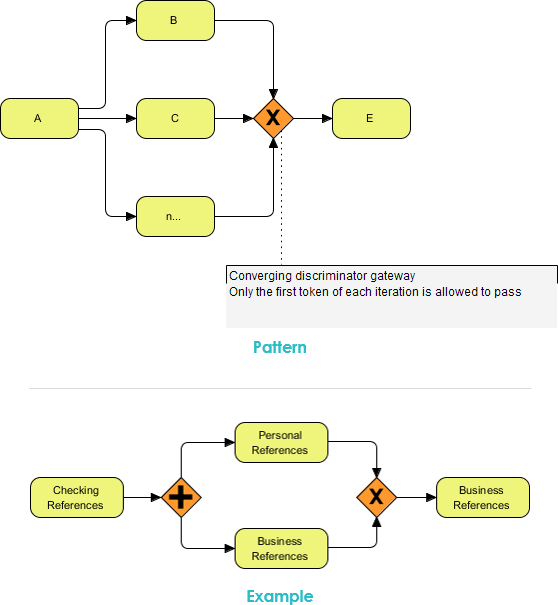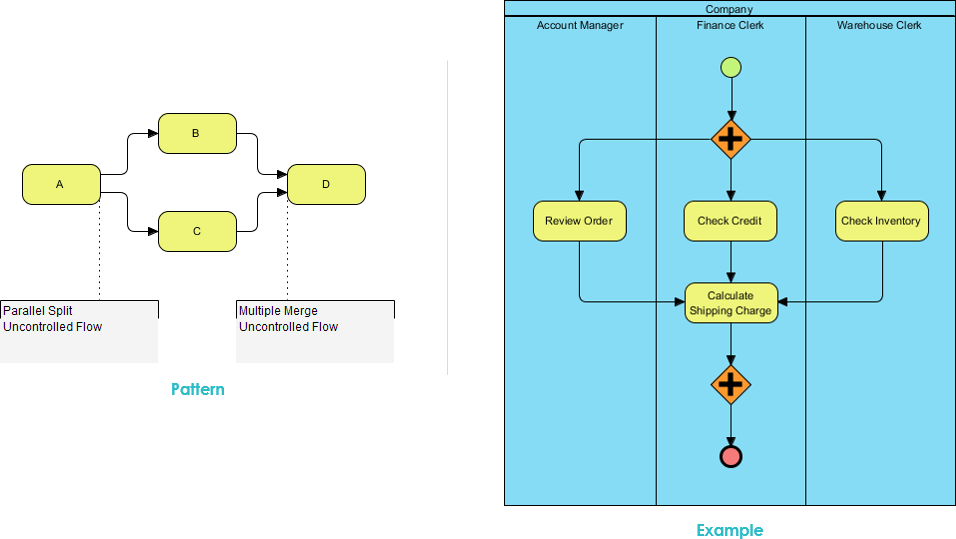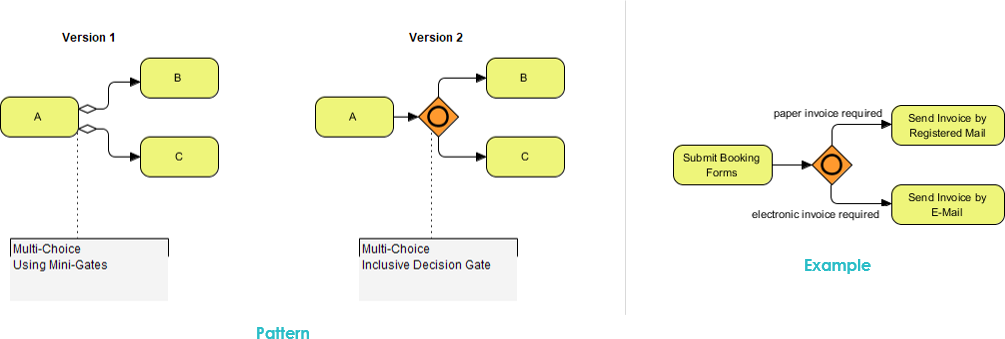
This is a BPD example that shows the use of the pattern MI without a priroi Knowledge.
A set of activities is executed sequentially in an order that is decided during the process instance run time. No two activities of this set are active at the same point in time. The activity instances do not interleave, and they are not executed in parallel.
Import into your Project
Open diagram in Visual Paradigm [?]Copy the URL below, paste it in the Open Project windows of Visual Paradigm and press Enter to open it |
Posted by:
